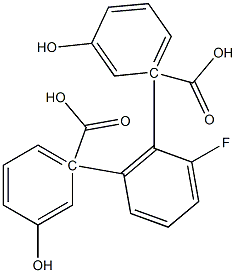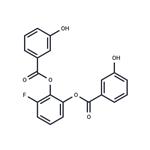Description
WZB117 (1223397-11-2) is an inhibitor of Glucose Transporter 1 (GLUT1). It inhibited cell proliferation in lung cancer A549 cells and breast cancer MCF7 cells with an IC50 of approximately 10 μM. Daily intraperitoneal injection of WZB117 at 10mg/kg resulted in 70% reduction in tumor volume of human A549 lung cancer grafted on nude mice.
Uses
WZB 117 is a GLUT1 inhibitor.
Uses
WZB-117 has been used to study its tumor initiating ability in cancer stem cells. It has also been used to study the effect of glucose antagonists on 2-NBDG (2-(N-(7-Nitrobenz-2-oxa-1,3-diazol-4-yl)Amino)-2-Deoxyglucose) uptake.
General Description
A
bis-hydroxybenzoate compound that acts as a fast-acting, irreversible blocker of glucose transport by GLUT1 in red blood cells. Shown to rapidly inhibit glucose transport in cancer cells (IC
50 ~ 500 nM in A549 cells) and block proliferation. Its inhibitory effects are more pronounced in hypoxic cancer cells. It binds directly to GLUT1 involving three hydrogen bonds, one each with Asn
34, Arg
126, and Trp
412. Also shown to reduce the levels of GLUT1 protein, intracellular ATP levels, and glycolytic enzymes and increase the level of AMPK in tumor cells. Preferentially induces cell cycle arrest and causes senescence and necrosis in red blood cells and tumor cells (IC
50 = 10 μM) over non cancerous cells and synergizes the anti-tumor effects of cisplatin (Cat. No. 232120) and paclitaxel (Cat. No. 580555). Also, effectively suppresses tumor growth in human A549 lung cancer grafted nude mice model (10 mg/kg, i.p., daily).
Biochem/physiol Actions
Cell permeable: yes
in vitro
previous study found that wzb117 could inhibit glucose transport in human red blood cells expressing glut1 as their sole glucose transporter. moreover, cancer cell treatment with wzb117 resulted in decreased levels of glut1 protein, intracellular atp, as well as glycolytic enzymes. all these changes were followed by increase in atp-sensing enzyme amp-activated protein kinase and declined in cyclin e2 as well as phosphorylated retinoblastoma, leading to cell-cycle arrest, senescence, and necrosis [1].
in vivo
animal study showed that the daily ip injection of wzb117 at 10 mg/kg led to a more than 70% reduction in the size of human lung cancer of a549 cell origin [1].
IC 50
~0.6 μm for blocking glucose transport in diverse cancer cells
References
1) Liu?et al. (2012),?A small-molecule inhibitor of glucose transporter 1 downregulates glycolysis, induces cell-cycle arrest, and inhibits cancer cell growth in vitro and in vivo; Mol. Cancer Ther.,?11?1672



